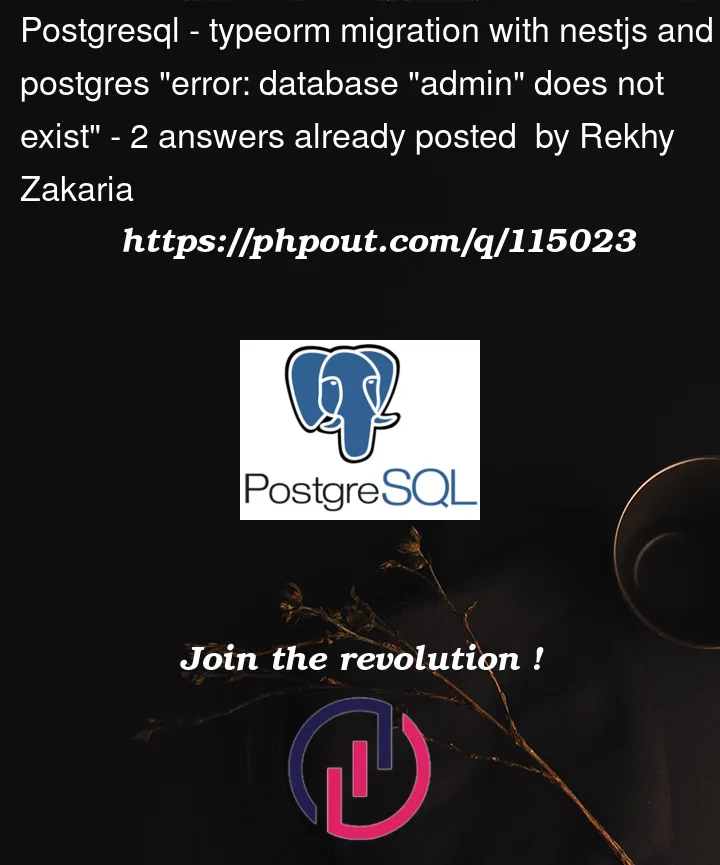please help me.. I’m following this instruction to do migrations in nestjs using typeORM but its always return an error. These my codes:
.env
POSTGRES_HOST = localhost
POSTGRES_PORT = 5432
POSTGRES_USERNAME = postgres
POSTGRES_PASSWORD = pass123
POSTGRES_DATABASE = postgres
ormconfig.ts
import { DataSource } from 'typeorm';
import * as dotenv from 'dotenv';
import { cwd } from 'process';
dotenv.config();
export const dataSource = new DataSource ({
type: 'postgres',
host: process.env.DATABASE_HOST,
port: Number(process.env.DATABASE_PORT),
username: process.env.DATABASE_USERNAME,
password: process.env.DATABASE_PASSWORD,
database: process.env.DATABASE_NAME,
entities: [cwd() + 'src/**/*.entity{.ts,.js}'],
migrations: [cwd() + 'src/migrations/*{.ts,.js}'],
migrationsTableName: 'migrations',
synchronize: false,
dropSchema: false,
});
package.json
"scripts": {
....
"typeorm": "ts-node -r tsconfig-paths/register ./node_modules/typeorm/cli -d ./src/config/ormconfig.ts",
"migration:create": "ts-node -r tsconfig-paths/register ./node_modules/typeorm/cli migration:create ./src/migrations/$npm_config_name",
"migration:generate": "npm run typeorm -- migration:generate ./src/migrations/$npm_config_name",
"migration:run": "npm run typeorm -- migration:run",
"migration:revert": "npm run typeorm -- migration:revert",
"schema:sync": "npm run typeorm -- schema:sync"
}
when i try to run the command at the first time using this comand
npm run migration:generate --name:CofffeeRefactor
i got the error message that there is no role admin
error: role "admin" does not exist
so i created the role admin in postgresql with this command
CREATE ROLE admin WITH CREATEDB CREATEROLE LOGIN ENCRYPTED PASSWORD 'pass123' SUPERUSER;
I checked
List of roles
Role name | Attributes | Member of
-----------+------------------------------------------------------------+-----------
admin | Superuser, Create role, Create DB | {}
postgres | Superuser, Create role, Create DB, Replication, Bypass RLS | {}
so I try it again to generate the migration, but i got the error message that there is no admin database
error: database "admin" does not exist
what should i do now? please help me figure it out




2
Answers
It looks likely that you have at least one previous migration failed or all previous migrations doesn’t match with your current database schema.
It seems like your environment variables are not being loaded and typeorm is trying to use a default connection.
Since you are using NestJs you can use the ConfigModule to load your environment. This is how I setup mine:
ormconfig.ts:postgres.config:For me the benefits of setting it up like this is to allow me to access specific aspects of the configuration from the NestJs
ConfigServicethat you can inject somewhere else to access your configuration.